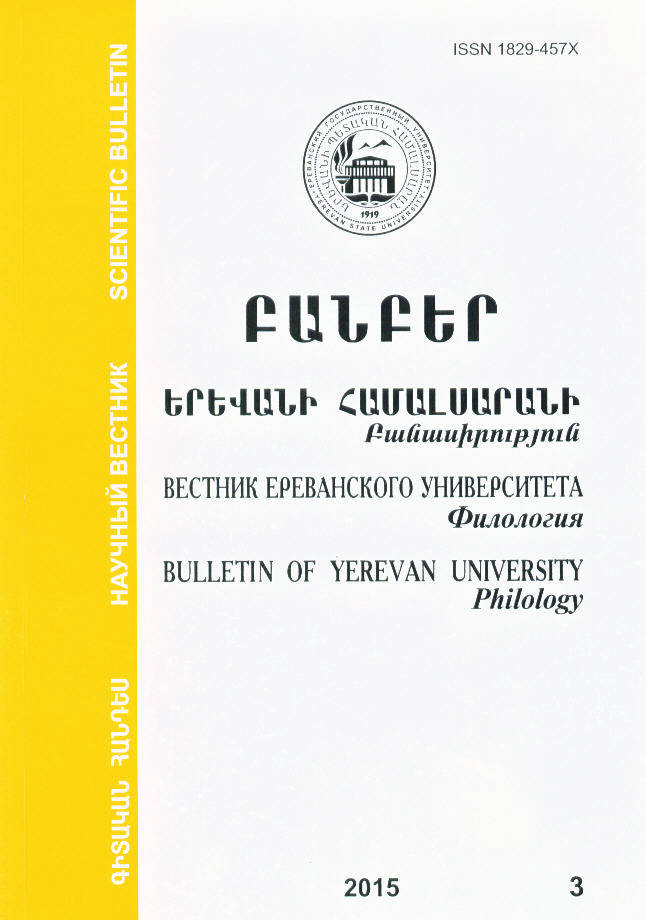G. Jahukyan and the Modern Indo-European Theories
DOI:
https://doi.org/10.46991/BYSU:B/2015.6.3.016Keywords:
Indo-European studies, comparative grammar, typological patterns, nostratic theory, systemic analysis, Indo-European languages, wave theory, genealogical affinity of languagesAbstract
In this article, the author has tried to represent Jahukyan’s investment in contemporary Indo-European theories. Although Jahukyan mainly represents the field of classical Indo-European studies, he has also dwelt on the problems of contemporary Indo-European studies in his works and has often suggested his own solutions. This concerns,first of all, to the so-called “nostratic theory”, on the basis of which Jahukyan has elabo rated his own approaches about the origin and development of related and non-related languages. In the same way proceeding from the modern theories of linguistic chronology he has accomplished the chronology of facts of the Armenian language and its related languages and their spatial distribution according to isoglosses. Meanwhile, Jahukyan’s approach is widespread in Indo-European studies and is used by many linguists. With the combined use of the above-mentioned principles, the linguist has also regulated the general and different development circumstances of related and nonrelated languages.
Downloads
Published
How to Cite
Issue
Section
License
Copyright (c) 2021 Bulletin of Yerevan University

This work is licensed under a Creative Commons Attribution-NonCommercial 4.0 International License.

